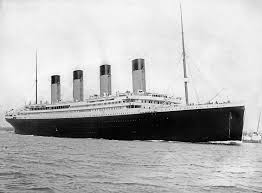The Titanic: A Look Back at the Unsinkable Ship

Introduction
The Titanic, one of the most famous ships in maritime history, represents a significant moment in the early 20th century. Not only was it hailed as the largest and most luxurious ocean liner of its time, but its tragic sinking on its maiden voyage in April 1912 propelled it into global consciousness and sparked enduring conversations about safety and engineering standards in maritime travel. The story of the Titanic continues to captivate and educate people around the world, revealing insights into human ambition and the vulnerabilities of technology.
The Launch and Features of the Titanic
The RMS Titanic was launched on May 31, 1911, by Harland and Wolff in Belfast, Northern Ireland. Constructed with a focus on luxury, it featured lavish dining rooms, a swimming pool, and opulent first-class suites that epitomized the Edwardian era’s affluence. The ship was designed to offer unprecedented comfort to its passengers, making it a popular choice for wealthy travellers across the Atlantic.
The Voyage and Tragedy
On April 10, 1912, the Titanic set sail on its maiden voyage from Southampton to New York City. Tragically, on April 15, the ship struck an iceberg, leading to its sinking in the North Atlantic Ocean. Out of approximately 2,224 passengers and crew aboard, more than 1,500 lost their lives in one of the deadliest maritime disasters in history. The tragedy highlighted significant deficiencies in safety protocols, lifeboat provisions, and iceberg monitoring, prompting major changes in maritime regulations.
Aftermath and Legacy
The aftermath of the disaster led to widespread mourning, and it spurred international attention on maritime safety. The investigation revealed crucial lessons, leading to the establishment of the International Ice Patrol and improvements in lifeboat requirements. Over the years, the Titanic has remained a symbol of human hubris and the importance of safety, quality, and responsibility in technology and design.
Conclusion
Today, discussions surrounding the Titanic extend beyond the tragedy of its sinking; it stands as a testament to the complexities of human innovation. New exhibitions, films, and academic studies continue to bring its story to new audiences, ensuring that the lessons learned from this historical event are not forgotten. As we approach the anniversary of the sinking, it remains essential for current and future generations to remember and reflect on the Titanic’s legacy, both in honouring those who perished and in recognising the advancements in safety that emerged from this great maritime disaster.









